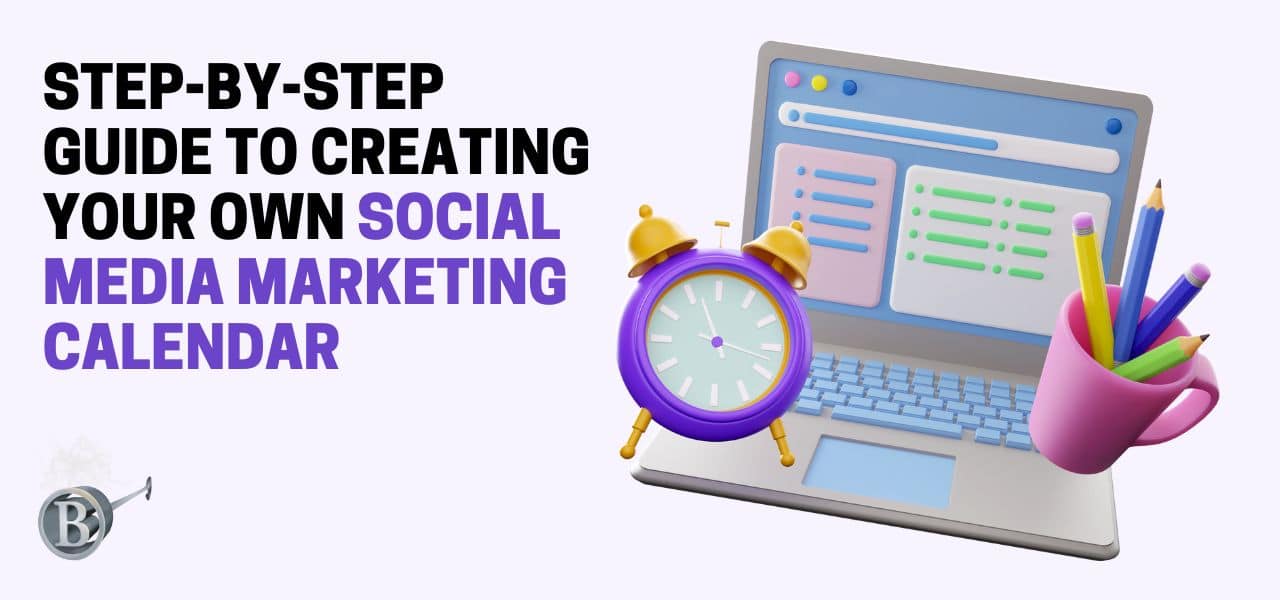How to Create a Social Media Calendar
Whew! We told you there were a lot of benefits. But how do you actually get started with implementing a social media calendar?
- Audit social networks and current processes
The first step to creating your social media calendar is to audit your current social networks and social media marketing workflows. If you haven’t started doing any social media marketing yet, you can skip this step.
But it’s more likely that you have, at the very least, posted here and there on Instagram or Facebook. So go ahead and do a quick audit in which you list:
- All the social media accounts you have for your business
- Who has access to each account
- The usernames of each account
- The descriptions and logos used on each account
- How many followers the account has
- Engagement levels
- How much traffic the accounts are sending to your website
- With all of this information in one place, you’ll get a better sense of what needs updating and changing.
- Create or reference existing goals
Next, you’ll want to make sure you have some social media marketing goals to serve as guidelines for the decisions you’ll make as you create your calendar. If you already have goals, great! Just revisit them and give them a refresh if necessary.
If you don’t have any goals, the best way to come up with a few is to look at your larger business goals and see how social media marketing might be able to help. For example, if your company has a goal of boosting revenue by 10% this quarter, your social media goals might be focused more on gaining new leads.
Some example social media marketing goals you can use for inspiration include:
- Reach x followers on your Instagram account by Q1
- Have a reach of at least x on each Twitter post
- Increase website traffic by x percent
- Receive at least x comments per Facebook post
- Choose what to include in your calendar
Now it’s time to actually start building your social media calendar. To start, you’ll have to decide what you want to include in the calendar. This will depend entirely on your needs and just how granular you want to be. If your social media marketing operation is still pretty small, it might be enough for you to just include the four or five most important data points in your calendar. Or, if you prefer to get really detailed and you have multiple accounts to balance, you’ll probably need more.
A full list of the different elements you might want to add to your social media calendar includes:
- Date and time the post will be published
- Post title if relevant
- Social media networks to post on
- Copy
- Hashtags and links to include
- Post type: is it new or reused?
- Post format: Is it text? Image? Infographic? Video?
- Post-campaign or theme
- Link to the published post
- Status of the post: has it been written? Edited? Approved? Scheduled? Published?
If you have multiple people working on your social media, you may also want to include:
- Post owner
- Post creator
- Post reviewer
- Choose networks and posting frequency
Now it’s time to decide on a few key details that will shape your social media calendar:
- Which social media networks will you be posting on?
- How many posts per day or week will you publish on each network?
- To help you answer these questions, reference your social media audit and goals. For example, if your audit revealed that balancing five different networks is challenging for you, consider taking it down to two or three. If one of your goals is to reach as wide of an audience as possible, you might want to have a relatively high posting frequency.
For your reference, here are the recommended posting frequencies for each social media platform.
Social Media Platform Ideal Posting Frequency Source
Instagram 2 feed posts per week and 2 stories per day Head of Instagram Adam Mosseri
Facebook Once a day to 5 times a month Hubspot
LinkedIn Once per day LinkedIn’s guide for small businesses
YouTube At least one video per week YouTube Strategist Maria Concepcion Zabala
Google My Business Once a day to 5 times per month Hubspot
Twitter 2-3 times per day as content allows HooteSuite
- Choose planning tools and calendar format
Next, you need to decide what format your calendar will be in and what tools you’ll use to help you plan.
In terms of format, you have the option of creating a weekly, monthly, quarterly, or yearly social media calendar. It’s common – and quite helpful – to use more than just one of those. A quarterly or yearly calendar can help give you a big-picture overview of your general content themes and needs for the year, while a weekly or monthly one can offer a more micro look at every single relevant detail of each post.
As far as tools go, your options are to either create a calendar from scratch or use a template on a spreadsheet like Excel or Google Sheets, or use a social media calendar application.
- Fill out the calendar
Now that you have an empty social media calendar, it’s time to fill it up! To do so, we recommend following these steps:
Events and holidays – Add any events and holidays that might be relevant to your brand. In addition to major national and international holidays, there are also many social media holidays, such as National Donut Day. You can find a calendar containing these in multiple places online.
Company events and relevant dates – Next, add any dates meaningful to your brand, such as the anniversary of your founding.
Larger-scale campaigns and themes – If you’re planning to do any social media campaigns in 2023, add those to your calendar. These include wider cultural events like Black History Month, but also occasions specific to you, like product launch promotion campaigns.
UGC and reused content – If you’re planning to post any user-generated content, link to another brand’s content, or repost something from the past, this is the time to add it.
Original ideas – Finally, it’s time to fill in original ideas for new posts. Here, it’s time to use your creativity to come up with anything you can think of. Some ideas for content include:
- Conversation starters and questions
- Links to blog posts
- Quotes
- Tips
- Images
- Videos
- Infographics
- Promotions of sales, services, and products
- Announcements
It’s okay if you can’t fill up the entire year’s worth of content ideas now. Planning at least a week or, ideally, a month in advance is perfect.
- Create content
Once your social media calendar is full, it’s time for you to start actually creating the content that you’ll post on your accounts, including writing the copy, taking the photos, and editing the videos. It’s okay if you don’t have a lot of resources for this. In addition to user-generated content and links to external content, there are many resources you can use to create social media content without breaking the bank. Be careful not to plagiarize someone else’s content that may have restrictions.
- Schedule and publish posts
We’ve finally arrived at the last step: scheduling and publishing your social media posts. It’s best practice to use a social media scheduling tool. There are several subscription companies but you’ll have to find the one that fits your company’s needs. Schedule your posts in advance so they will automatically go live at the right date and time.
Using your calendar to look ahead at your upcoming posts, you can schedule them in a batch one week or even a month in advance. This will save you the effort of having to manually go in and post every day and give you flexibility in case you aren’t always available to go on your accounts and post things yourself. (After all, you do need a vacation every once in a while.)
Check out our two other blogs, Taking the Guesswork Out of Social Media: What is a Marketing Calendar? and Maximizing Your Social Media Marketing Strategy With A Calendar, to further enhance your understanding of social media marketing calendars. These blogs will provide you with a deeper dive into the concept of a marketing calendar, as well as a comprehensive guide to creating your own customized calendar. With all three blogs, you’ll be well-equipped to streamline your social media marketing efforts and maximize your time.










